Breaking Beta | Did You Punt Because Your Focus is On the Wrong Thing?

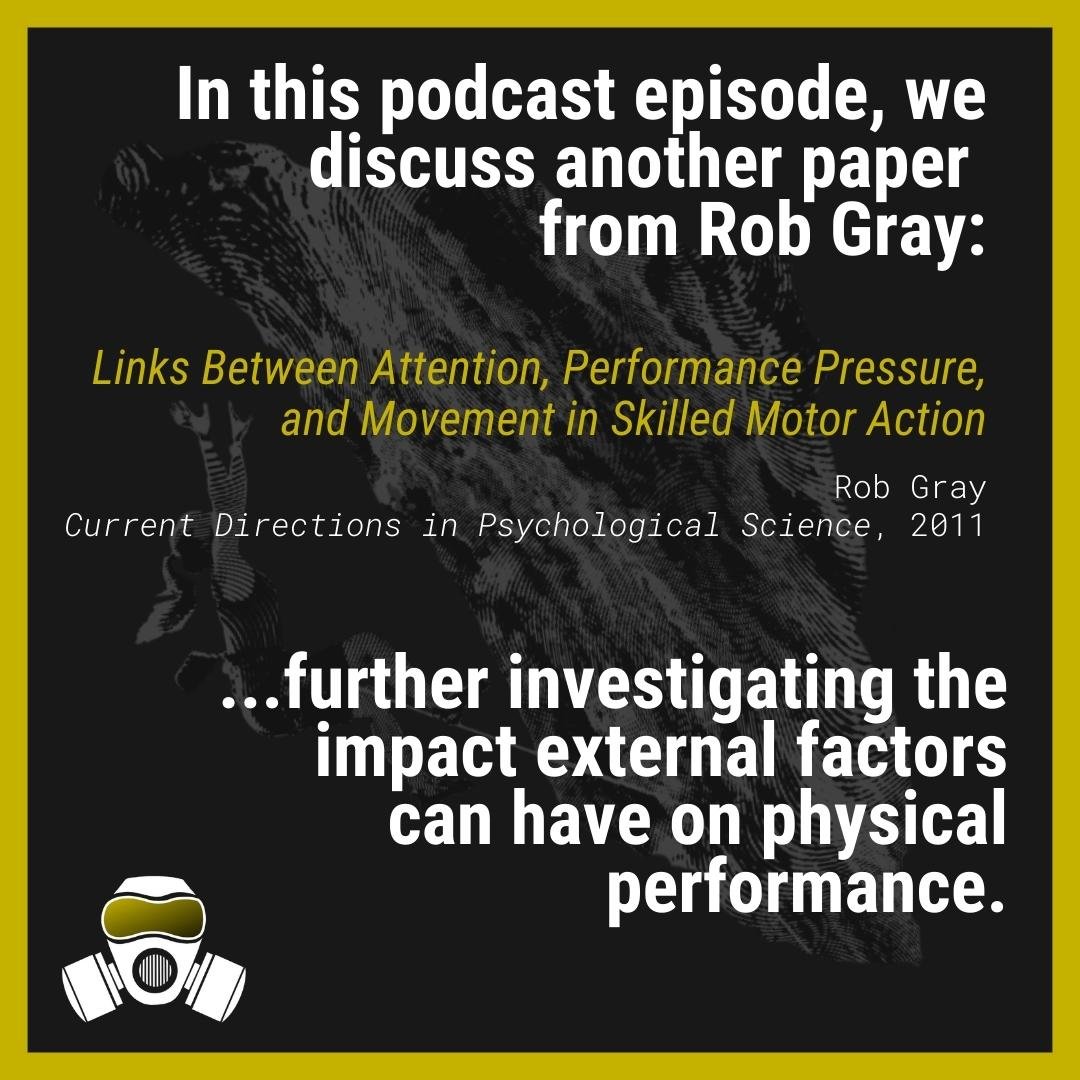
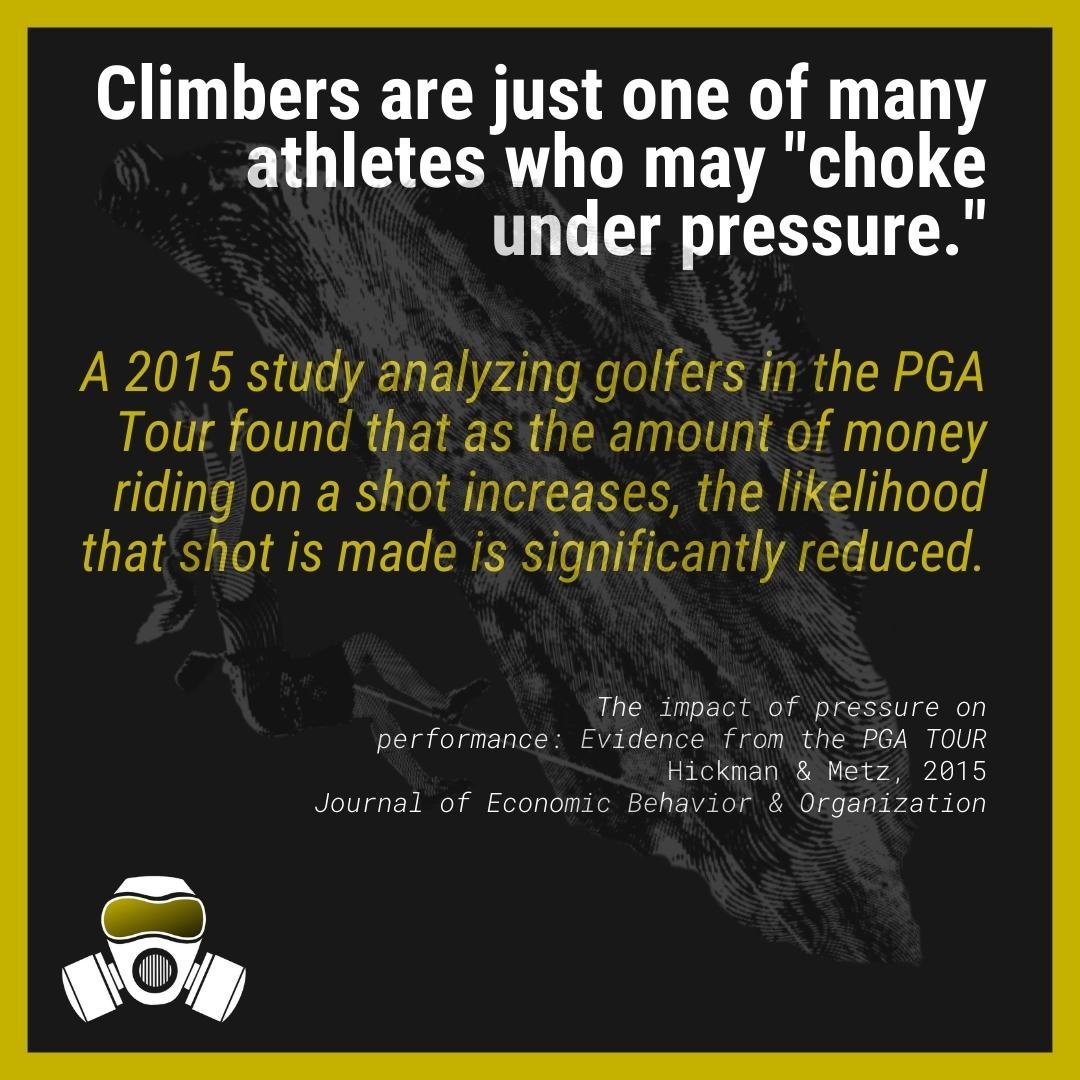


In this episode, Kris and Paul discuss a paper that explores how our attention - and where we focus it - can impact our performance:
Links between Attention, Performance Pressure, and Movement in Skilled Motor Action
Authored by Rob Gray; published in Current Directions in Psychological Science in June, 2011.
They’ll discuss the difference between focusing attention internally or externally, and how each has been shown to affect athletic performance, especially when the pressure is on. They’ll break down four ways that attention focus has been shown to impact movement, and what this information could mean for climbers.
*Additional studies/resources mentioned in this episode:
The impact of pressure on performance: Evidence from the PGA TOUR
Authored by Daniel C. Hickman and Neil E. Metz; published in the Journal of Economic Behavior & Organization in May, 2015.
Performance of gymnastics skill benefits from an external focus of attention
Authored by Reza Abdollahipour, Gabriele Wulf, Rudolf Psotta, and Miriam Palomo Nieto; published in the Journal of Sports Sciences, 2015.
Internal and External Focus of Attention in a Novice Form Sport
Authored by Gavin P. Lawrence, Vicky M. Gottwald, James Hardy, and Michael A. Khan; published in Research Quarterly for Exercise and Sport, 2011.
New episodes of Breaking Beta drop on Wednesdays. Make sure you’re subscribed, leave us a review, and share!
And please, tell all of your friends who are constantly telling you that “You’ll send if when you do that, you just focus on pulling with your lats instead of your traps,” that you have the perfect podcast for them.
Got a question? Comments? Want to suggest a paper to be discussed? Get in touch and let us know!
Breaking Beta is brought to you by Power Company Climbing and Crux Conditioning, and is a proud member of the Plug Tone Audio Collective. Find full episode transcripts, citations, and more at our website.
FULL EPISODE TRANSCRIPT:
Kris Hampton 00:00
Season Two of Breaking Beta is brought to you by Gnarly Nutrition. After the episode use the code BETA15 for 15% off of your next order at gognarly.com or click the link in your show notes to have the code automatically applied. Gnarly Nutrition: Push your possible with science-backed, delicious sports nutrition.
Breaking Bad Audio Clip 00:25
Marie, I think it's time you fill me in on some more details here. There is no problem, no matter how difficult or painful or seemingly unsolvable.
Dave, can we simply just focus on my feelings here. The details don't really matter, do they? There's nothing to be done.
Kris Hampton 00:45
There's nothing to be done, Paul. The details don't matter. We just focus on the feelings, no matter how painful or difficult or unsolvable the problem might be.
Paul Corsaro 00:59
Haha. Yep, just ignore everything, just go. Full bore, all the way through. The only way out is through, right?
Kris Hampton 01:04
Haha. Exactly. Today's episode, I think is maybe a bit of a like, precursor of sorts to where I think we're probably headed in general with this podcast, at least in part. You know, we'll be looking at one main paper review, but then we're also exploring a bunch of associated papers in order to come up with how climbers and climbing coaches can use the research to their benefit. And we've we've done that to a degree and I think we'll still continue to look at individual papers, but I'm sort of liking this format of going down rabbit holes and seeing what else I find. How about you?
Paul Corsaro 01:46
Yeah. And it's kind of what along the lines of what I always want the process of reading research, at least for me, to to be is taking, you know, this theory, or this one instance of exploring this one category of thing, but how can we make this as widely applicable as possible? How does this inform our process? Like, the whole goal is taking things from theory to application. I think, as we dig into these papers, that we're not just digging into one, but we're coming up with a bit more complete set of processes that we take into coaching or improving performance. It's kind of where we want to end up.
Kris Hampton 02:23
Yep, absolutely. Today, the main paper we started with is by Rob Gray, same author from last week, who frankly has done a tremendous job of continuing down rabbit holes and asking the next obvious questions that give us, as coaches, the answers that we're looking for. This paper is titled "Links between attention performance, pressure, and movement in skilled motor action". It was published in 2011, in Current DIrections in Psychological Science. So essentially, there's this growing body of research showing that where an athlete focuses their attention while performing a skill can have pretty dramatic effects on that performance. And it sort of depends on their current skill level. And then you add performance pressure into the mix, be it a comp or last day of a trip or season coming to a close or, you know, whatever the case may be, where we tend to focus our attention in those situations might be exactly what the research is saying is the wrong place to aid performance. So today, we're going to be looking at some of the mechanisms that might be behind this as it pertains to our movement, which, as climbers, is pretty damned important to the outcome of our performance.
Paul Corsaro 03:50
Absolutely. Let's dig in.
Kris Hampton 03:51
That was a mouthful, but
Paul Corsaro 03:53
Haha yeah. I think I think you nailed it. Let's do it.
Kris Hampton 03:57
All right. Let's get this thing rolling.
Breaking Bad Audio Clip 04:00
You clearly don't know who you're talking to, so let me clue you in.
Paul Corsaro 04:04
I'm Paul Corsaro
Kris Hampton 04:06
I'm Kris Hampton.
Kris Hampton 04:07
Lucky two guys, but just guys, okay.
Paul Corsaro 04:11
And you're listening to Breaking Beta,
Kris Hampton 04:13
Where we explore and explain the science of climbing
Breaking Bad Audio Clip 04:17
With our skills, you'll earn more you ever would on your own.
Breaking Bad Audio Clip 04:20
We've got work to do. Are You ready?
Paul Corsaro 04:26
I'm ready. Are you?
Kris Hampton 04:28
I am not overthinking it. I'm an expert level podcaster, so I'm, I'm ready.
Paul Corsaro 04:35
Haha, Awesome.
Kris Hampton 04:38
You know, we've all heard that phrase, right? The "You're overthinking it". I think that's that gets thrown around a lot. We might say it when we think someone is trying too hard to get something right. That they should just let it happen or let the body climb, as some people say or you know, some other phrase that honestly is much easier said than done.
Paul Corsaro 05:02
Yeah, it's like I don't really think those phrases, in terms of finding a way to fix whatever the issue is or stop punting off something, that's not super helpful, right?
Kris Hampton 05:13
No. No, it's it's so hard to, to just say, "Okay, I'm gonna stop thinking about it. I'm just gonna totally switch gears", you know. And you know if that is true, because we hear coaches say it all the time, we hear athletes say it all the time, overthinking it. If that's true, why is overthinking it bad? What is what is overthinking? What's that actually look like? And, you know, there, there are two ways to focus your attention, essentially, and those are internally and externally. Internal is putting your attention on the way you're executing the skill and in relationship to your body, like "My hips need to be shifted here", "I have to squeeze my butt on this move", things like that.
Paul Corsaro 05:59
You feel my right gastrocnemius as I toe into the foothold.
Kris Hampton 06:02
Hahaha. Exactly, exactly. If you can, the further you can narrow it down, the better in some people's opinions. External focus would be more focusing on the intended outcome of the movement or the even the hold itself or, you know, there's there's some research looking into even allowing yourself to be completely separate of the performance, which would be, you know, like hearing noises or thinking of something completely outside of the the performance. When I when I sport climb, I'm able to pick out individual voices in a crowd. Often voices that I know, and I hear them very clearly, so maybe that's a byproduct of being externally focused. I don't know.
Paul Corsaro 06:54
Yeah, and I think another distinction that can be used here is like it's pretty common in the strength training world too where you've got your internal and your external cues. I think they share a lot of similar concepts like you know, on a deadlift, an internal cue would be "Feel those hamstrings stretch as you go down. Try and use those hamstrings to drive the weight off the ground". External cue would be like, "Push your hips back towards the wall behind you on the way down", something like that.
Kris Hampton 07:18
Right. Right.
Paul Corsaro 07:19
The context of you, this internal versus external, different spheres.
Kris Hampton 07:24
Perfect. Yeah. And there's, there's some quite a bit of research saying that for novices, focusing on the execution of a skill can be beneficial to learning. So telling them "Feel that hamstring stretch" can be beneficial to them actually learning it. But when it comes to experts, focusing on the skill execution can lead to a worse performance. "Overthinking" it, so to speak. So an internal focus of attention appears to be good for practice, and for novices, and that includes experts learning a new skill, because they're novice at that skill. But for performance, in general, an external focus seems to be the thing that most research is suggesting.
Paul Corsaro 08:07
Yeah
Kris Hampton 08:08
There's, you know, this paper links several things together, which I think is really important. And there's also evidence that when the pressure is on, that turning to an internal focus of attention, which is what we often think we need to focus on to do the exact right thing, you know, that might actually be the reason we end up punting, we come up short on an easy dead point, or we freeze up or whatever it is, you know, we choke under the pressure and fall on a spot where we just couldn't imagine ever falling. And this is saying maybe that's because we are turning our focus of attention internally, trying to get everything right and that's the reason our performance goes bad.
Paul Corsaro 08:55
And what I like about this, elements of what changes when that direction of focus changes is he's broken it down into these couple different categories that help us kind of put things further into buckets to maybe try and isolate what we can work on to improve to maybe fix this issue and make it happen less.
Kris Hampton 09:16
Real quick, I looked at this study. It's from 2015. And I just want to illustrate how much pressure can change these things, before we get into what these individual pieces are. I thought this study was really interesting. 2015, looking at golf, these are all PGA players. They looked at 23,000 putts in the PGA and they found that as the amount of potential money that could be made by a putt increased, the likelihood that putt would be made decreased. So even for professional athletes, as more pressure got put on, the likelihood that they would actually perform well went down. So I just think that's, that's really interesting. And they theorized that the mechanics of the putting was what was changing and that might also be the case for climbers.
Paul Corsaro 10:20
It's funny you mention that. It was about two weeks ago, I think there was some tournament, we were watching it with some friends over here. It was the, I think, the PGA championship, but in like one of the later holes, they actually went back and did a replay of one of the putters, one of the golfer's putts, his takeaway and how he brought it back. And it was the most erratic, wildest thing I've ever seen. It actually turned into a meme for a little bit floating around, so the pressure was definitely getting to this person for sure.
Kris Hampton 10:46
Haha. Wow. Yeah, and that's, you know, that's fascinating. These are professional athletes who've been who've done this over and over and over and over and over, and still, once the pressure is there, their, their mechanics, what we might call "the basics", changes.
Paul Corsaro 11:02
Absolutely.
Kris Hampton 11:03
So like you said, he breaks it down here into four types of movement effects that have been observed in the research. Very, very similar to what we saw last week in his paper about embodied perception. We're gonna go through each of these, and then talk through some of the ways that we can use this information as climbers and as coaches. Number one is changes in movement variability. Now, climbing is a complex sport. No two movements, even if both are the same technique, you know, let's say two drop knees, for example, are exactly the same. They just aren't. They're going to be different. Even if you're doing the same drop knee on the same move over and over, it's going to change a little bit. The way that you organize that movement is going to differ. Let's say you are generating movement and your knee angle is slightly different than the previous attempt. You might make up for that, that difference by bending more at the elbow of the pulling arm or bending less on the elbow of the arm that is catching the hold or something like that. It's going to change a little each time. Two different movements, same outcome. And this is what we mean by movement variability. That, that even though you're getting the same outcome, the movement is going to be a little different. Sometimes called repetition without repetition. This theory says that one of the differences between expert and novice movers is often that the experts have better functional movement variability. They can adapt to changes without changing the outcome, whereas lesser skilled athletes will often have an amount of movement variability that changes the outcome.
Paul Corsaro 12:51
And I think another one of these points too, is that variability can either be a good or bad thing, depending on the sport.
Kris Hampton 12:58
Right.
Paul Corsaro 12:59
So you know, certain sports require very, very little variability to perform well and these experts will have that smaller amount of variability inherently in their technique of whatever activity they're doing. In other sports, like you mentioned, that we need a little more variability to get the desired outcome depending on certain inputs and such and the more skilled or higher level of expert, your higher highest elite may have more of that variability.
Kris Hampton 13:27
Yeah, and as, as I understand it, the those sports will often be, you know, they, they have less variability in certain pieces of their movements and then they're able to adapt, you know, in later parts of the movement or something like that
Paul Corsaro 13:47
Right.
Kris Hampton 13:48
Whereas the lesser skilled athletes, even in those cases, won't be able to adapt to the small changes that happen in these movements that, for them, require less variability.
Paul Corsaro 13:59
Yeah, correct. And I think they mentioned a study in this paper breaking down sort of what we're talking about where the author of this paper actually performed another study in 2004, where he took some skilled baseball players and they did a hitting task under just normal conditions where they were going to hit a an amount of balls in a simulated simulated batting cage, to put to put it simply, and one was just normal time. And then the other trial was a pressure condition where they were told they had won the, you know, the World Series, they needed to make this hit to bring a run home. They had people in the lab to cheer or boo depending on what they did and there was actually a monetary consequence from how well they did. If they did well, they won some money so there was some pressure there. And they found that the pressure and in relation to pressure and skill, the higher pressure and lowered levels of skill there was more of variability in the timings of certain components of their swings. So this movement variability does change based on that pressure, which, in theory forced their focus of attention more inward onto the internal aspects of the skill, as opposed to the external outcome.
Kris Hampton 15:16
Yep. And they were getting fewer hits, so not only is their movement changing, but the the outcome is worse. And this has also been seen in golf and it's been seen in several sports that this is what's what's happening, that movement variability is increasing in a bad way, the outcome is being changed.
Paul Corsaro 15:40
And I think one of the elements that this 2004 paper used to see where their focus of attention was in that higher pressure situation, they use the skilled batters. They were better able to see what direction their bat was moving on in the pressure trial as compared to the baseline where they weren't under pressure. So that highlighted the fact that their focus was more on how their swing is, their internal components of their swing, as opposed to normally when they're just focusing on the external outcome.
Kris Hampton 16:15
Yeah, that seems really counterintuitive, right? I mean, for me, it, I would think, when someone is doing better, they're better attuned to their movement. But in this case, as they got worse, they could better tell which direction their bat was moving. I think that's fascinating.
Paul Corsaro 16:36
It is, it kind of brings to mind the old saying about just learning something where you have unconscious incompetence, conscious incompetence
Kris Hampton 16:46
Right
Paul Corsaro 16:46
And then conscious competence and then finally, unconscious competence, where you just do it. You don't think about it, you just execute
Kris Hampton 16:54
Right
Paul Corsaro 16:54
Pressure or more challenging situations maybe force you to move backwards along that paradigm.
Kris Hampton 17:01
Yep. Number two is changes in multi-joint coordination. We talked about this a little bit. When you're first learning a new movement, especially as a beginner, there are innumerable ways you could try to move your body in order to reach the desired outcome. These are what famous neurophysiologist Nikolai Bernstein calls the "degrees of freedom". And one of the ways that beginners often solve the degrees of freedom problem, like "How do I move all these joints to make this thing work?", is by freezing some of those degrees of freedom. So they lock down some of their joints in some particular orientation, so that they can then explore with other joints. As they practice and begin to better understand what's required, they'll begin to unfreeze some of those degrees of freedom. It's it's been suggested that experts, when they're put under stress, or in these high pressure situations, will often revert back to freezing the degrees of freedom to make the task seem less complex. So in these studies, we can look at what are the degrees of freedom when they're performing in a, in a non pressure situation versus a pressure situation. Are they locking down certain joint angles and only exploring with others or are they free to move how they want to?
Paul Corsaro 18:30
And I think you'll see that just from a visual perspective. A well executed climbing sequence as opposed to one that's not as well executed, there's definitely a degree of fluidity that you just fluidity that you just see. It's apparent.
Kris Hampton 18:45
Totally.
Paul Corsaro 18:45
So I think that could be a great broad visual representation of where some folks are freezing that freezing the amount of freedom they have available to them to simplify things.
Kris Hampton 18:57
Yep, exactly.
Paul Corsaro 18:58
And funnily enough, the paper mentioned in this review is actually a study that looked at the effects of anxiety on the movement behavior of novice rock climbers. So they had the participants of this study climb at two different heights on an indoor climbing wall. And they found that when climbing higher on the wall, participants exhibited movements that are more rigid and less fluent than they did when climbing at the low height on the wall. And obviously, you know, for all intents and purposes, that's a very simple way to look at climbing performance as opposed to some of the other stuff we've looked at. But I think it's a good representation of how our movement can change based on pressure, anxiety, circumstances where we could choke or just the level of complexity of your task.
Kris Hampton 19:42
Yeah, and I think we've all seen this. You know, I have this really distinct memory of doing this thing in the Red River Gorge that was a really old bolted route, out on the at this crag in the middle of nowhere, and the first bolt is really high off the ground. And it was quite a bit below my level of climbing at the time, my top level of climbing at the time, so I was able to do it pretty quickly. And then my friend who was trying it, tried it on top rope after I hung the rope up or was trying to lead it, but was getting really scared, jumping off. And I said, "Why don't you just try it on my top rope?" and he's like, "No, that's not the problem. That move is just hard for me." and I'm like, "Try it on the top rope once." And as soon as as soon as he was on top rope, he did it really easily.
Paul Corsaro 20:34
I gotta ask. What route is this?
Kris Hampton 20:36
Oh, gosh, I can't even remember the name of it, Paul. It's at Hen's Nest.
Paul Corsaro 20:40
Oh, man, that is in the middle of nowhere.
Kris Hampton 20:43
Yeah, it's this weird little bolted face climb.
Paul Corsaro 20:46
Interesting.
Kris Hampton 20:48
And, you know, fear will very often shut us down or anxiety. We get more rigid. We're not able to access the movement that we want to or that we could if that anxiety or that fear that pressure weren't there. I also I looked at a dart throwing study from 2010 and also there, the externally focused group had better throwing accuracy and more movement variability at their joints. So they're cueing them with internal focus or external focus and the group who was cued to focus externally, on the dart or on the target, I don't remember the exact conditions for that study, but they ended up with not only more movement variability in their joints, but better throwing accuracy.
Paul Corsaro 21:45
I mean, and intuitively you think about that, too, if the main goal of your of the task, or what you're told to do is focus on all these internal factors, you're going to tighten everything up, because you've got so much things you need to deal with and figure out that you're going to have to reduce the range of where you let these things move, as opposed like, "Hey, throw this at the board. Try and get in the bull's eye." You're going to organize a little more intuitively.
Kris Hampton 22:11
Yeah, yeah. And that this is all saying, you know, our bodies are really good at organizing themselves to do a task, if we let them do it, instead of trying to force it, essentially.
Paul Corsaro 22:22
And I thought they brought up a good point in this section too, because they actually referred back to the movement variability session, or the point that we just talked about, where they said, it may seem contradictory that in this case, in terms of multi-joint coordination, reducing the degrees of freedom reduces movement variability, but don't we want more movement variability, or vice versa. But they made a good point and referenced the Beilock and Gray, that these effects represent a temporary regression to a lower skill level or earlier level of skill acquisition, which I think is a really important point to pull from all of us. That is kind of the overarching framework of kinda where we sit for all these things and how they represent where we are, relative to where we normally are and then, as the circumstances changes, or we face pressure, we may be regressing back down that timeline of skill acquisition and these that's what these changes represent.
Paul Corsaro 22:22
Right, exactly. So moving more like a novice again, or an intermediate climber again, as opposed to continuing to move like an expert when the pressure is on.
Paul Corsaro 23:31
Well said, I like that. That's that's the way.
Kris Hampton 23:35
All right. Number three is changes in movement economy. And, you know, honestly, I don't think this one needs a whole lot of introduction. Most climbers understand that movement economy is important. We're all familiar with like the idea of overgripping. As the pressure sets in, we tend to be less economical in our movement. We get rigid. We use more energy than necessary. You know, we start telling ourselves and our partners not to blow it, and we start over gripping. Our attention reverts to doing the move perfectly, and then we're off. You know, that's kind of how, how I regularly see it play out when I'm out climbing.
Paul Corsaro 24:16
I've felt it. I've done it.
Kris Hampton 24:17
Absolutely. Of course.
Paul Corsaro 24:20
Yeah, that one, yeah, so that one's that one's pretty just cut and dry.
Kris Hampton 24:24
Yeah.
Paul Corsaro 24:24
Which is kind of nice to have every now and then in studies, because that doesn't happen often.
Kris Hampton 24:28
Yeah, totally. And, you know, they they looked at it in, in several other studies as well. I think they talked about the same dart study in here, that they also were gathering EMG activity during that same dart study. And there was a reduction in EMG activity for the external focus of attention group, who had better accuracy, and and more movement variability in their joints. So it would appear they were being more economical.
Paul Corsaro 25:03
Yep, absolutely. There's also a basketball study too, where they were looking at free throws, and the two groups of participants, one of them, their focus of attention was on the basket and making the shot and the internal focus condition was they had to focus on their wrist movement. And they showed that there was more bicep and tricep EMG activity when you were focusing on the wrist movements. They're using more muscular energy to complete the same task. So in theory, a little less efficient, less skilled and performing that movement in that internal focus condition.
Kris Hampton 25:36
Yeah, sounds like exactly what you had mentioned that you tell somebody to focus on something in their body and they're going to tighten up, they're going to try harder, they're going to put more effort there. So more energy, less economy. Alright, number four changes in motor control strategy. Motor control strategies are essentially the pattern we use to create a movement, whether that's in the order in which we activate muscles, or how we initiate movement. Or it might be that in one strategy, we drive more through our hips and legs and have to do less work with our upper body when we you know, when we get to our desired position. Whereas another strategy might be to reduce the amount of force we're applying through our lower body and then have to increase the force we need to create through our upper body in order to stay on the wall. So essentially just changing the order of things to reach the same outcome, different motor control strategies in order to achieve it.
Paul Corsaro 26:39
Yeah, and Beilock and Gray, who we mentioned earlier, looked at some putting... golf putters, to examine this shift in control strategy and they had an experiment where there's two different situations. One was attentional control was manipulated via two different secondary tasks. So they would, during their putting stroke, they would have to judge there was a tone, or an audio tone was played during their putting stroke and they were.... while they were putting the ball, they had to judge the frequency of that tone. And then they also had to judge whether whether the tone occurred closer to the start or end of their putting stroke, when it came out. Which you know, just sounds wildly stressful to me.
Kris Hampton 27:22
Hahaha
Paul Corsaro 27:22
That's so much shit to focus on.
Kris Hampton 27:24
Hahaha. I know, I know.
Paul Corsaro 27:27
But then they also looked at putting performance for all for all of this. And they actually showed that for the experts, the performance of the putting was least accurate when they had to judge where to... whether the tone occurred closer to the starting or end point of their putt, which signified that they were putting more conscious attention on their putt and all the components of their putt to know where that tone occurred. Which again, shows that shift in focus that's brought on by pressure or challenging situations, and moving them further back along that paradigm of skill acquisition and where you're at in the learning of that.
Kris Hampton 28:03
Yeah. You know, I'm totally hypothesizing here, but I think we see something similar to this in climbing when we, when we ask someone to do something different during a move. You know, something like, you know, "Focus on pulling harder with this arm when you're reaching for this hold" and then when they do that, suddenly their feet are cutting when they usually stay on. You know, we've effectively pushed their focus of attention inward and their motor control strategy has reverted to what I can only assume is a more novice motor control strategy,
Paul Corsaro 28:38
Or just the goal of the task is changed. The goal is no longer to latch the next hold. The goal is to pull with the toe, so whatever else happens as long as I pull with the toe, we're good, so
Kris Hampton 28:48
Totally. All right, let's, you know, that's the four different types of movement effects that have been seen in the research. So let's, let's take a break and when we come back, we'll talk about how we can use this in our climbing and in our coaching.
Breaking Bad Audio Clip 29:05
Please, I really need a break here. Okay.
Kris Hampton 29:10
Like many of us who are focused on performance, I'm a creature of habit. I spent the first 45 years of my life always choosing chocolate over vanilla. Every single time. Well, not anymore. Gnarly Vanilla Whey changed all that. Whether it's sprinkled over my breakfast cereal or blended with fruit, Gnarly Creatine and Gnarly Collagen for a pre-session snack, vanilla has taken over as the flavor of choice. Responsibly sourced, nothing artificial and also available in a vegan version, Gnarly Protein comes in a steel can that's infinitely recyclable. The nutrition science is good, and they care about the environment. Now, don't get me wrong, I still keep a can of chocolate protein in the cabinet because mixing chocolate and vanilla together is the best recovery protein drink around. You just have to try it for yourself. Use code BETA15, that's B E T A one five for 15% off your next order at gognarly.com or click the link in the show notes to have the code automatically applied.
Breaking Bad Audio Clip 30:17
Let's all get back to work, for Christ sake. Okay.
Kris Hampton 30:19
Okay, before we jump into this discussion of how to use all of this, I first wanted to shout out Rob Gray's podcast, The Perception & Action Podcast. It's one of the best resources for coaches and climbers who are interested in digging into the details of movement research. I actually found it when I was trying to come up with formats for this show. So I've, I've listened... now listened to hundreds of his episodes since and I'm a supporter on Patreon and we mentioned in the last episode, his book. So between his research, his book and his podcast, certainly one of the best resources out there.
Paul Corsaro 31:01
And one of my favorite things about his podcast is it's not a two hour podcast. Like if you want to get actionable information about pretty complex subject matter but understand it well, come away with some takeaways, and get one done probably on your commute to work, it's tough to beat.
Kris Hampton 31:19
Yeah, it's fantastic.
Breaking Bad Audio Clip 31:21
I got all these little pieces. They're all part of the story, right? But they don't mean much on their own. But when you start telling me what you know, we start filling in the gaps. I'll have them in lockup, before the sun goes down.
Kris Hampton 31:32
Okay, one of the big issues with translating a lot of this to climbing that we discussed a little in the previous episode is that the majority of these studies are, are looking at sports that are using an implement of some sort, you know, a golf club, a baseball bat, a basketball. And we want to know how it works when we essentially are the implement. You know, where should our focus of attention be, and what's the difference between an internal and external focus there. Because it's not going to be as simple as you know, "Focus on the face of your putter while you swing" or something like that. So I went down this rabbit hole of looking at gymnastics and dance studies on the subject. Those were the two sports I could come up with or activities I could come up with that were the most similar to climbing and they're pretty fascinating. Actually, I looked at a gymnastic study in the Journal of Sports Sciences from 2015 and this study was by Abdollahipour et al, but it included Gabby Wulf, who is a just an absolute giant in this field. They looked at skilled gymnasts doing a fairly simple jump with a 180 degree turn. They were being given cues about where to focus and they measured their jump height, while also giving the execution of the skill a quality rating. They had three groups and internal focus and external focus and a control group who got no cues at all. What they found was that the external focus group jumped higher and had better movement quality ratings. The external cue they were to focus on was a strip of tape across their chest. It was just "I want you to point this tape at this when you land.", so really subtle difference from your own body, but still one that was able to get results. So I think that's, that's kind of fascinating when it's, you're the implement.
Paul Corsaro 33:50
And it's cool seeing these concepts, like I mentioned a little bit earlier, it's cool seeing these concepts show up in different fields. Like the whole internal versus external cueing for coaching, where most of the like strength coaching, like simple barbell lifts and such like that, where the external cue is, in the majority of circumstances, probably going to improve execution of that movement. So these same concepts keep getting validated. But so are you saying we put strips of tape on climbers and tell them to
Kris Hampton 34:20
Maybe. You know, I could imagine in a situation like, say, it's some like big jump cross that you're doing and you have to, you know, rotate your torso, away from the wall in the middle of the air to catch this hold. Maybe that's a that's part of the cue. If they're having trouble figuring that out, instead of just telling them to turn you know, point the front of your shirt at this wall when in the middle of this move. You know, maybe that helps them learn that move without bungling everything else that leads up to it.
Paul Corsaro 34:55
I will say there's a boulder problem in Stone Fort, pretty famous, Tennessee Thong, where one of the last moves is a giant move to a almost blind, good hold. First time I ever did the move, I actually put my hand on the hold. I made a mark with chalk on my forearm where like the lip of that little sloper.
Kris Hampton 35:14
Yep.
Paul Corsaro 35:14
And I was like, "I want to get that chalk mark to that point on the sloper" and stuck the move.
Kris Hampton 35:19
Yeah
Paul Corsaro 35:20
So there you go haha
Kris Hampton 35:21
Totally. Haha. Right there. I looked at another gymnastic study from 2013 by Lawrence et al in which participants had no experience and they were shown a short routine consisting of some really simple movements, a lunge, arabesque, and a full turn. They practiced the routine and then went through several trials with different cues on where their attention should be directed. This study found that nobody did better than any others. And one thing they posited here is that because dance has a vague outcome, meaning it's all about quality, that these participants didn't really have a concrete idea of what quality means in that context. So the focus of attention didn't really make a difference for them.
Paul Corsaro 35:35
Interesting.
Kris Hampton 35:36
Yeah. So I mean, I think that for me, at least, that speaks to the coaches out there who want to say, "This is good technique. This is bad technique", "I want you to do a good drop knee", you know, "I want you to do a good heel hook". What the hell does that mean? That's not a that's not a very concrete outcome that I can direct my attention toward. So so maybe those types of cues are something we can throw out.
Paul Corsaro 36:48
No. And just a me trying to draw lines between those two studies you just shared like one was a group of you said pretty
Kris Hampton 36:56
Experienced gymnasts
Paul Corsaro 36:57
Pretty accomplished, experienced gymnasts, gymnasts. And these, these people weren't with any experience, right?
Paul Corsaro 37:02
And referring back to this paper, I think they mentioned that the external focus is much more effective with elite or more skilled performers.
Kris Hampton 37:02
Right.
Kris Hampton 37:15
Right
Paul Corsaro 37:16
So maybe that lack of difference just could be reflected in the experience level of the people in that study as well. And something we need to take in mind when we coach people climbing like,
Kris Hampton 37:27
Totally
Paul Corsaro 37:27
Finding the right method of coaching the certain movement or technique and like, like you said, there's not a "good drop knee" or a "good heel hook", but able, being able to meet the athlete with where they're at and test/retest. "Try this." Does it make the movement better or does the outcome improve when you try this method as opposed to the other? So
Kris Hampton 37:48
Yeah, and, you know, we would expect to see here that an internal focus because they're beginners, would, would be the better cue. They're saying the reason it wasn't is maybe because it's all about quality and, and they don't even really know what that means. So, you know, maybe even for beginner climbers, if, if we're moving their focus internally, in order to help them in those initial stages, we still have to give them some sort of concrete outcome as opposed to just talking in terms of quality of movement.
Paul Corsaro 38:27
Yeah
Kris Hampton 38:28
It's more like.....climbing is actually a really nice situation in that the outcome of a movement is almost always
Paul Corsaro 38:36
You stay on the wall
Kris Hampton 38:36
Get to the hold. Stick the hold. You know
Paul Corsaro 38:38
Yeah
Kris Hampton 38:39
So we've got that built in, which is quite nice, actually.
Paul Corsaro 38:43
Which is great for reinforcing you know, those strategies too. "Hey, this strategy worked. Keep using this strategy in the future." It can lead us down dead ends every now and then, but, you know, odds are, eventually we'll end up where we want to go.
Kris Hampton 38:58
As, as with anything, the definitions of internal and external are heavily debated, you know. In running studies, as well as a few other sports there's, there's this further delineating of types of attention, associative and dissociative, meaning monitoring functions that are related to the task or things that are completely unrelated. You know, it's tough to be dissociative in climbing, unless it's an absolute mindless ladder with Treadwall laps, you know. So I don't think we need to go that far down these rabbit holes in talking about attention. I think climbing ultimately sets up really well for this as long as we are mindful of it as coaches and not always directing the attention inward.
Paul Corsaro 39:54
I think, especially as you move into.... as comps continue to grow and the competition style of climbing continues to grow, those pressure situations, I think are becoming more like other high level sports in terms of that pressure situation. You know, you mentioned before, you know, we have the last day of the trip, we have, you know, our last go of the day, we're nervous above a bolt. Those things, yeah, that's pressure and can be extremely stressful. And then we also have this competition's pressure, which I think can also be stressful for different reasons as well. You've got, you know, now you have stadiums of people watching you rock climb, like that hasn't really happened that much, except for the last, you know, 15 years.
Kris Hampton 40:38
Right
Paul Corsaro 40:39
So dealing with that is where we see more of this choking, choking environment, I feel like these days. So training that could be helpful, too.
Kris Hampton 40:51
Yeah, and I think it happens to folks just at busy crags too. People get really tight and you know, have a hard time climbing well when they're in front of a crowd. So I think it's a good reason to practice, you know, whether you're a coach or a climber, as a coach, it's a good reason to practice learning to cue externally and as a climber, it's a good thing to practice, you know, "Can I find a way to flip myself into this, you know, external sort of focus of attention?". And that brings up this question that I have about all of this and I actually thought of you, specifically, when this popped into my head. What about the common cues that I know we both use, things like "tight" or "breathe"? Or like you're you're very good at timing, just an "exhale" to get someone to exhale. And I've seen some coaches not only make the mistake of over-cueing, but constantly over-queuing in a fashion that shifts internally. So I'm just curious, are things like "tight" or "breathe" doing that? What do you think?
Paul Corsaro 42:19
I think yelling at someone, just going from.... because I do love to do that. I think that..... someone did that to me. It was way back....I don't know what 15, 14 years ago, when I was climbing and it just like clicked. It was instant. Just relaxed, I breathed. But I didn't think "Oh, no, I'm not breathing!" or "Oh, I need to take a breath!". It was just like I just did it without thinking about it. It was unconscious. And that just stuck with me. And I think that's beaause... that could be, based on what we've talked about today, instead of "Oh, someone's telling me to breathe. Am I breathing? Maybe I should breathe.", you just hear, outside of yourself, a breath and then that just starts the process.
Kris Hampton 42:52
Right
Paul Corsaro 42:52
So I think that is a good way to go about telling someone "tight" or yelling "breathe". I think that might be a better option because of that external focus.
Kris Hampton 43:02
Yeah, I think so too.
Paul Corsaro 43:04
I don't know how you'd go about that, making that more external. That would be an interesting one.
Kris Hampton 43:09
Yeah, I don't know. It's one of those that I like. Like I like saying "tight", you know?
Paul Corsaro 43:15
Yeah
Kris Hampton 43:17
And I do think that, that experienced climbers, while climbing...and I actually looked into a dance study where they were talking about this idea... that moving between focuses is what happens during a performance a lot of the time. So coming internally for a second to check up on something or to notice something and then immediately moving it back externally to the outcome of that movement. I suspect that happens more, that there's this gray area there and it's not a totally black and white issue of "Is your focus internal or external?". I think we're always checking in,
Paul Corsaro 44:07
Things are always black and white, though.
Kris Hampton 44:09
Hahaha
Paul Corsaro 44:09
Haha I feel like I say that every other podcast
Kris Hampton 44:12
Hahaha. Yeah, you know, I do think listening to this episode could cause some folks to think, "Oh, we're not supposed to pay attention to what's happening. We're supposed to just black out while we climb.", you know, and that's not really what's being said here. If you hit a hold, and you can feel that you're not in quite the right dimples of the hold or you're starting to slide on the hold, that's just information that's that's being given to you. And it's still external. It's it's the hold that you're you're focused on there. And we need that information. That's necessary information for the next move. You know, it's going to change our motor strategy. It's going to change our movement variability. Things are going to reorganize in such a way to make the next move work even though you're sliding off of this sloper slowly. So it's not that we're trying to ignore what's happening. It's more about, we're not trying to get into this robotic mode of "I have to do these movements perfectly".
Paul Corsaro 45:19
And being able to, like you said, switch back and forth in and out of, you know the minutia, then back to the outcome and being able to flip that switch.
Kris Hampton 45:29
Yep. And, you know, right before we got on this call, I was thinking about all the times sport climbing, that I've, like, gotten through the crux, and then I go into "preserve the send" mode, you know, and I start crawling up the wall. I'm climbing at this extremely slow pace. And I think what I'm doing there is I'm locking down some of the degrees of freedom. You know, I'm not getting too wild, too wild for me. You know, that's gonna be totally different for somebody like Tomoa, who can be really wild and still be well in control haha
Paul Corsaro 46:11
Haha. You're not pogoing to the anchors?
Kris Hampton 46:15
Not unless I have to. So I do think there is a reason actually to practice that sort of slow robotic movement. And that's one of the reasons I like our like sloth/monkey drill. Learning to climb like that, really controlled, where some of the degrees of freedom are frozen, is probably not a bad thing. If you go into "preserve the send" mode, and and you're just locking things down, because your focus has gone internal and you're trying to climb perfectly, instead of getting like, "Oh, no, my focus is internal, I need to externally focus now", maybe just being good at climbing in that situation isn't a bad thing.
Paul Corsaro 47:04
Yeah, I think you know, that's where we have all these opportunities for practice, like with that sloth/monkey drill. And in these situations where, you know, maybe the outcome isn't as....I don't know if "important" is the right word...but... as emotionally important, I guess, would maybe be the way to go about it, like in terms of just like a climbing session at the gym, as opposed to your last day on your project, where you can expose yourselves to the more internal or less optimal ways of moving.
Kris Hampton 47:37
Yeah
Paul Corsaro 47:37
So you can least do it when you get in into that position.
Kris Hampton 47:41
Yeah, totally. I think it's tricky. I think as coaches, we just want to be mindful of the fact that novices and people in a learning situation, internal focus seems to work pretty well in those cases. But as we get better, as we get more skilled, we want to start moving those cues more externally. Climbing sets up really well for this, so I think, I think coaches are in a good position as long as they're mindful of it.
Paul Corsaro 48:15
And I think this paper overall was super helpful in giving us those four different buckets of ways as coaches we can intervene and make changes in those strategies in different categories, instead of just "Oh, you're being too external" or "Oh you're being too internal", like, "How?"
Kris Hampton 48:29
Yeah
Paul Corsaro 48:29
So you know, we've got these four, four buckets to start exploring and see if we can start creating some improvement,
Kris Hampton 48:35
Right? Totally. All right. You can find both Paul and I all over the internets by following the links right there in your show notes. You can find Paul at his gym, Crux Conditioning in Chattanooga, Tennessee. If you have questions, comments, or papers you'd like for us to take a look at hit us up community.powercompanyclimbing.com. Show yourself some love and visit this season's sponsor, Gnarly Nutrition, at gognarly.com. Use the code BETA15. That's all caps for 15% off. And also, if you're a first timer to Gnarly, what you want is the Vanilla Protein and the Raspberry Hydrate. You can thank me later. Don't forget to subscribe to the show. Leave us a review. And please tell all of your friends who are constantly telling you that you'll send if you just focus on pulling with your lats instead of your traps, that you have the perfect podcast for them. We'll see you next week when we take a long overdue look at the performance characteristics of female climbers and whether or not we see the same predictors, as in the largely male focused studies
Kris Hampton 48:53
Can't wait. We'll see y'all then.
Kris Hampton 49:36
It's done. You keep saying that and it's bullshit every time. Always.
Breaking Bad Audio Clip 49:52
You know what? I'm done.
Breaking Bad Audio Clip 49:54
Okay, you and I were done.
Kris Hampton 49:59
Breaking Beta is brought to you by Power Company Climbing and Crux Conditioning and is a proud member of the Plug Tone Audio Collective. For transcripts, citations and more, visit powercompanyclimbing.com/breakingbeta
Breaking Bad Audio Clip 50:12
Let's not get lost in the who, what and whens. The point is we did our due diligence
Kris Hampton 50:18
Our music, including our theme song Tumbleweed is from legendary South Dakota band Riff Lord
Breaking Bad Audio Clip 50:24
This is it. This is how it ends.





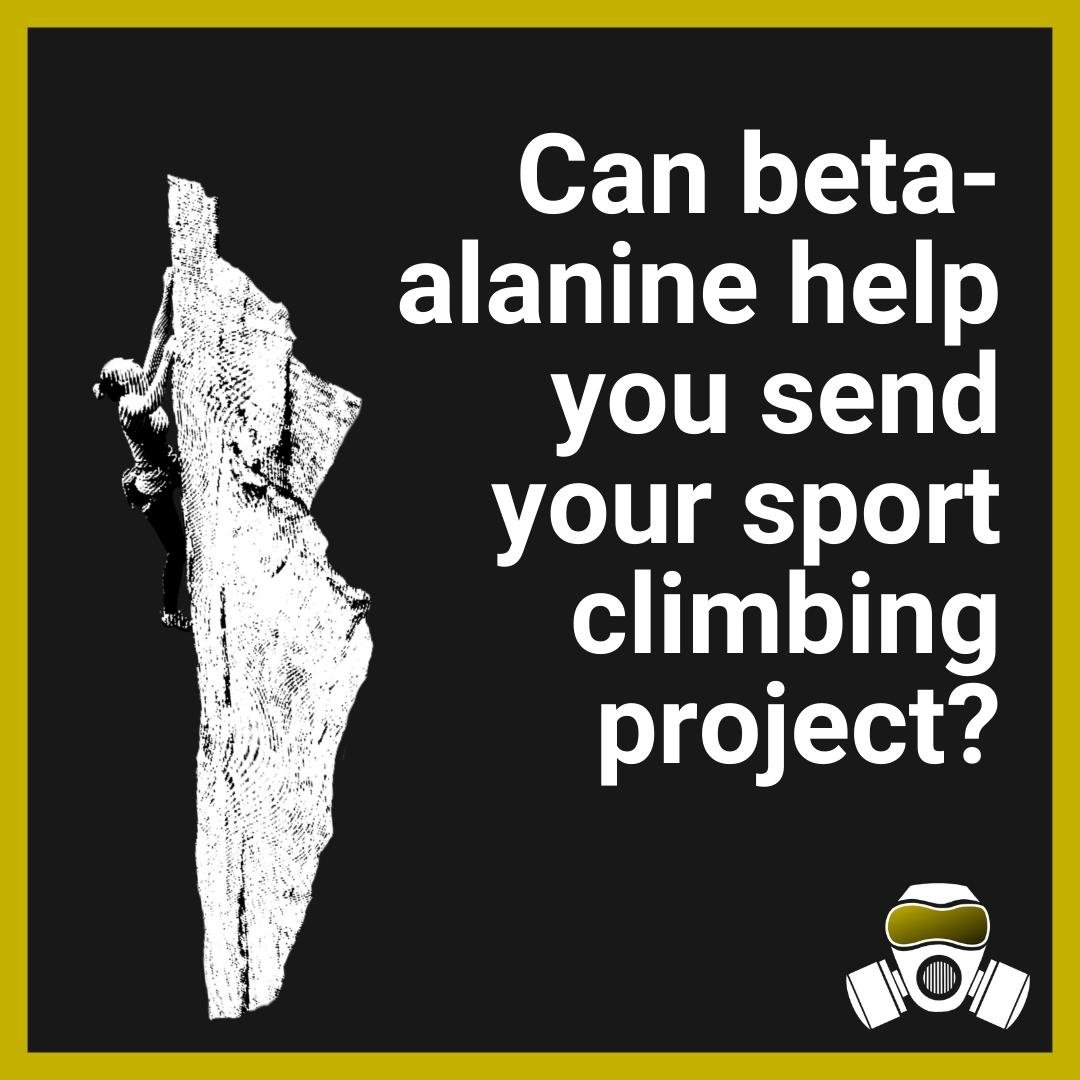

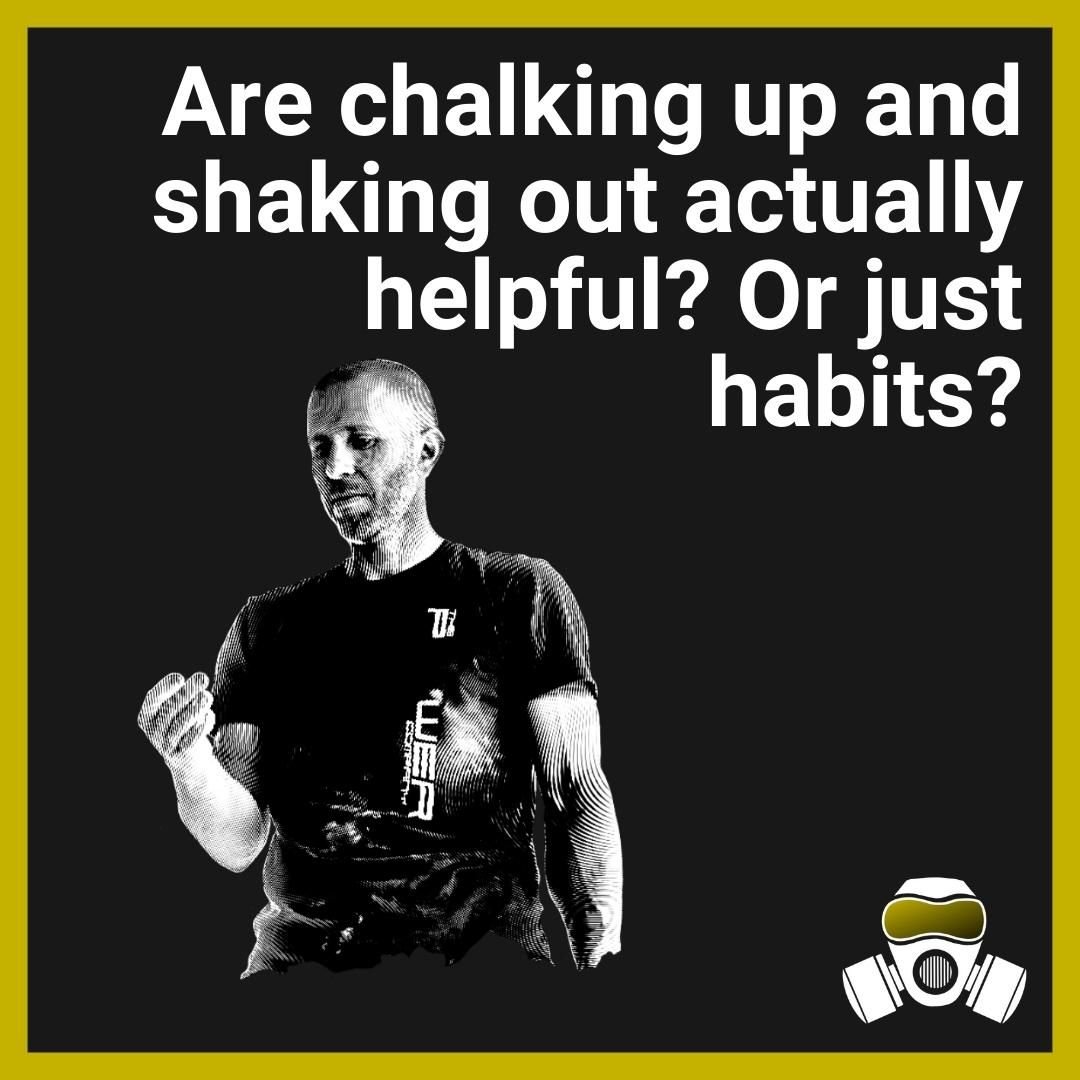
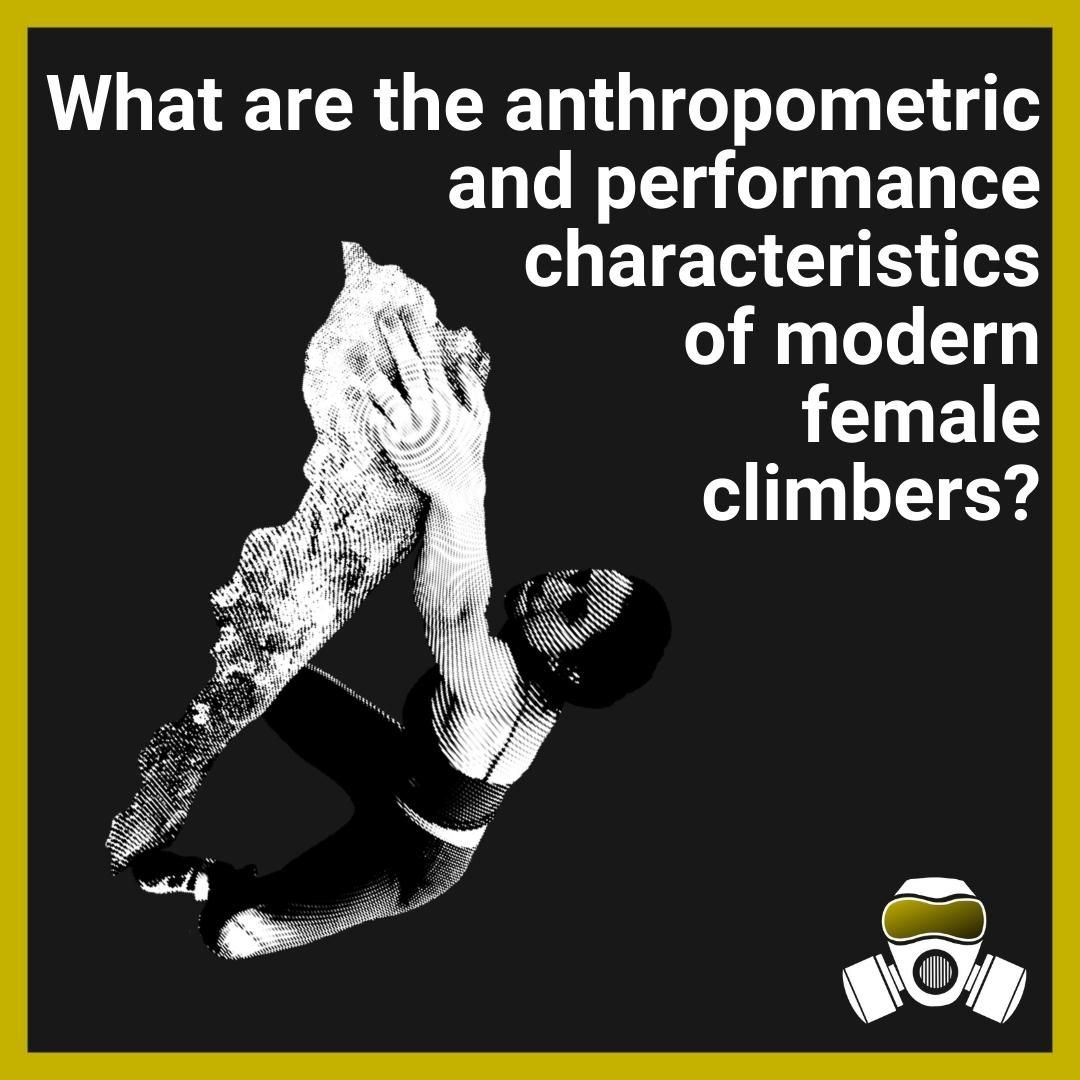

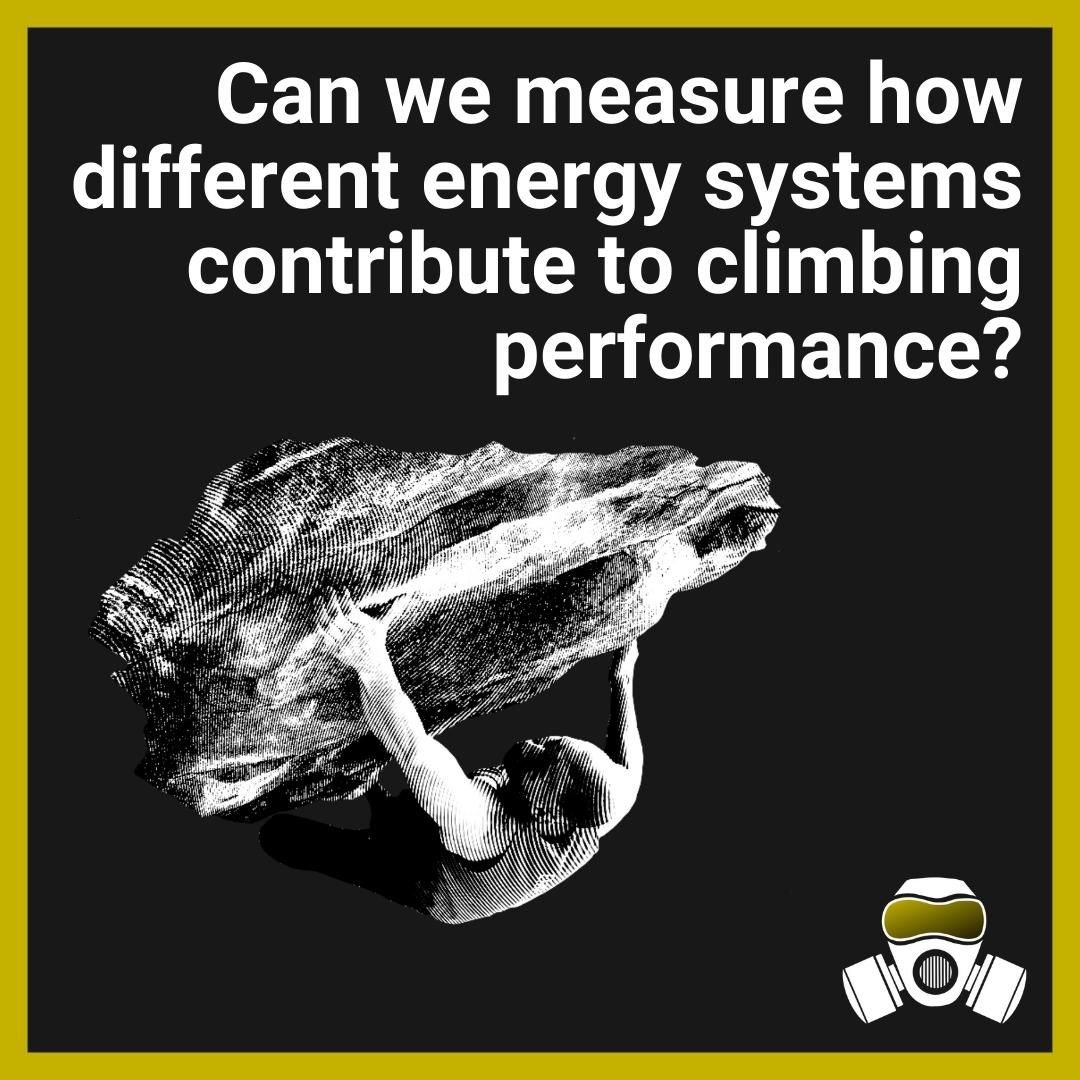
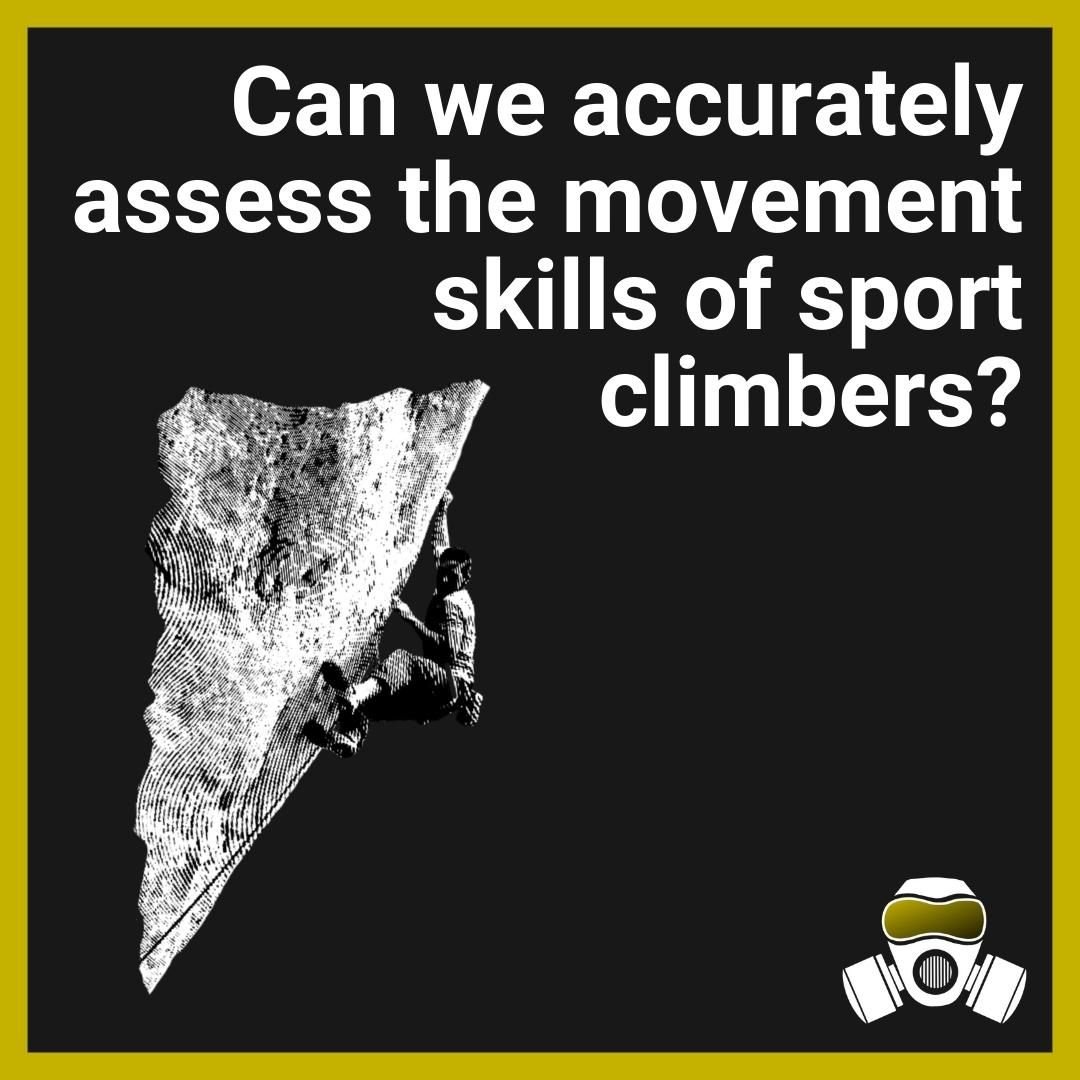
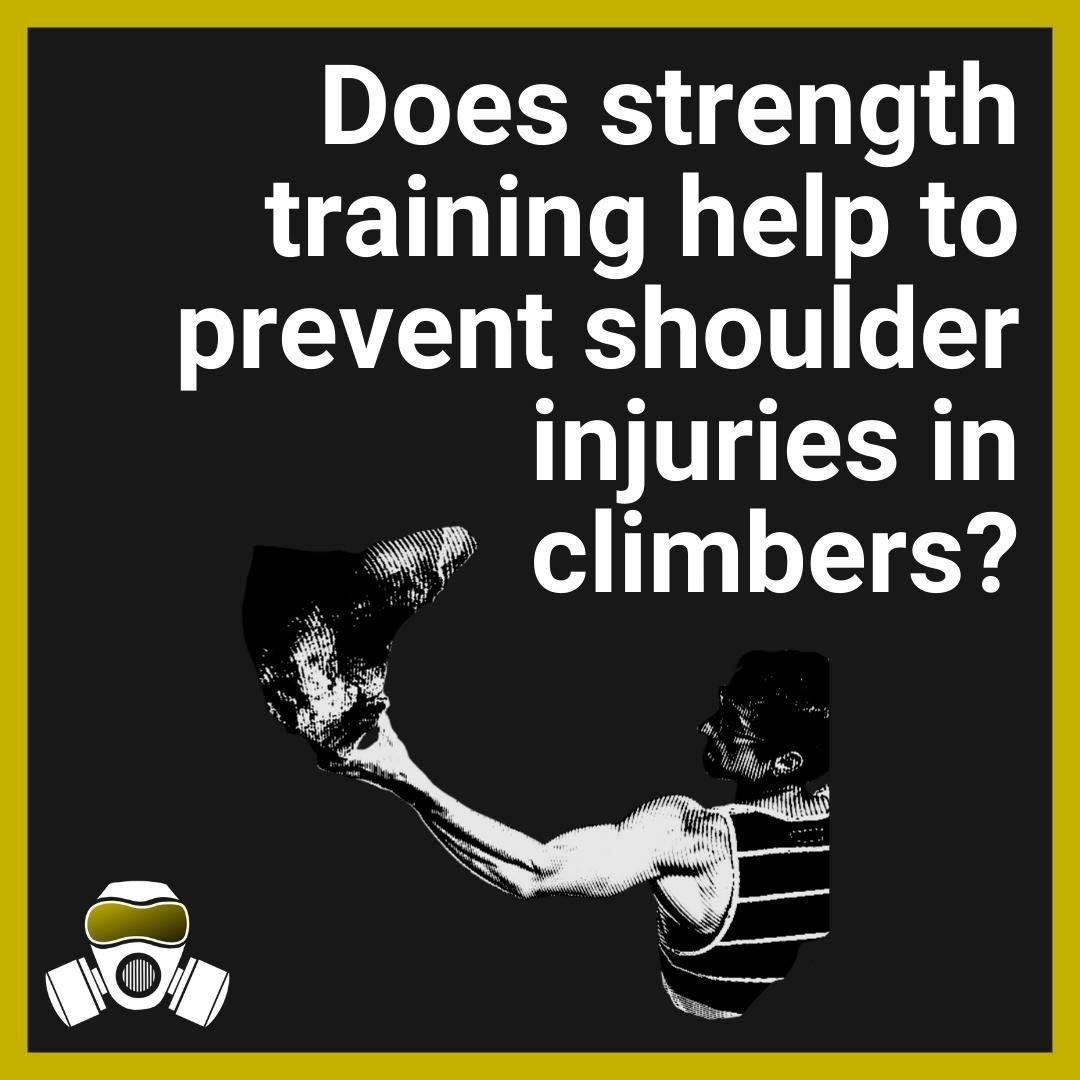











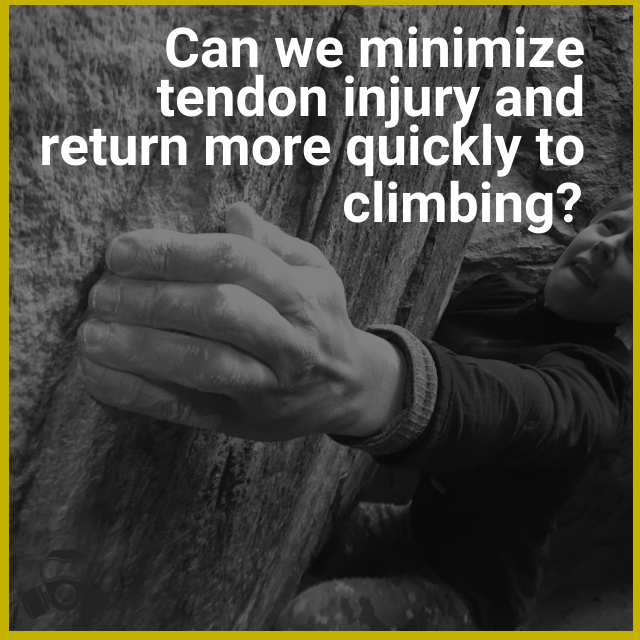
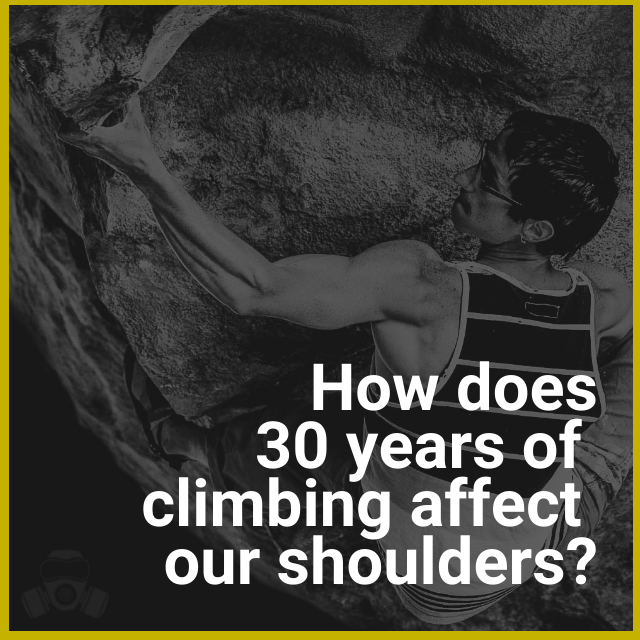
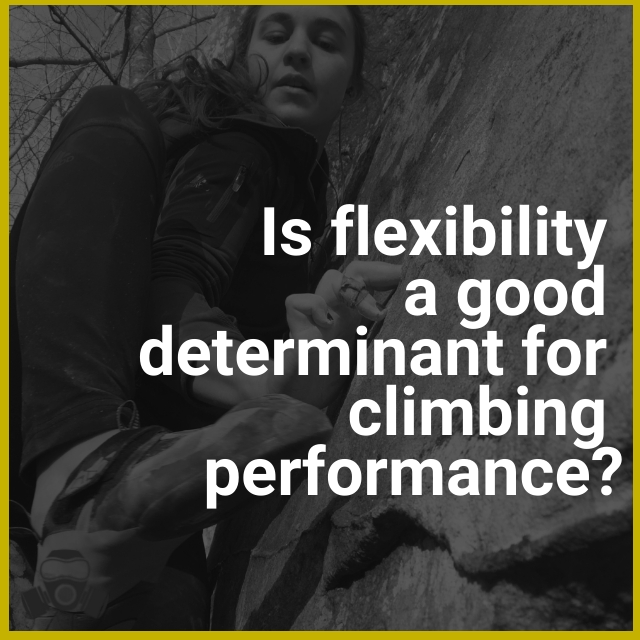
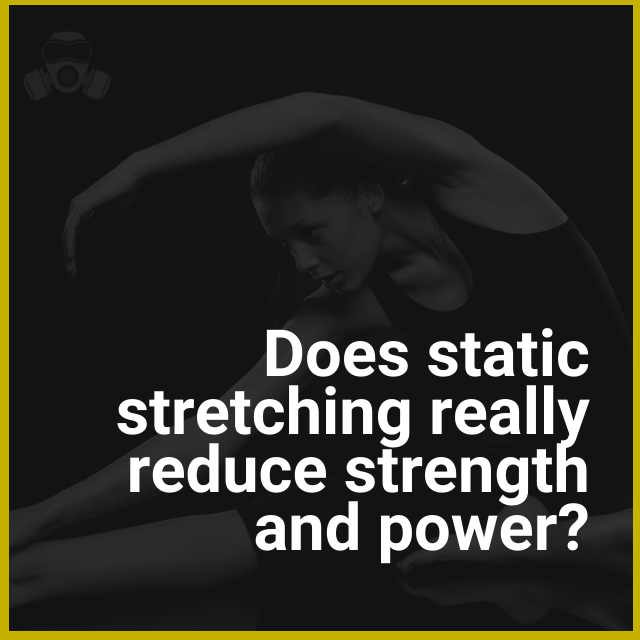



Kris and Paul dig into a paper that presents and then tests a method for measuring movement skills in sport climbing.